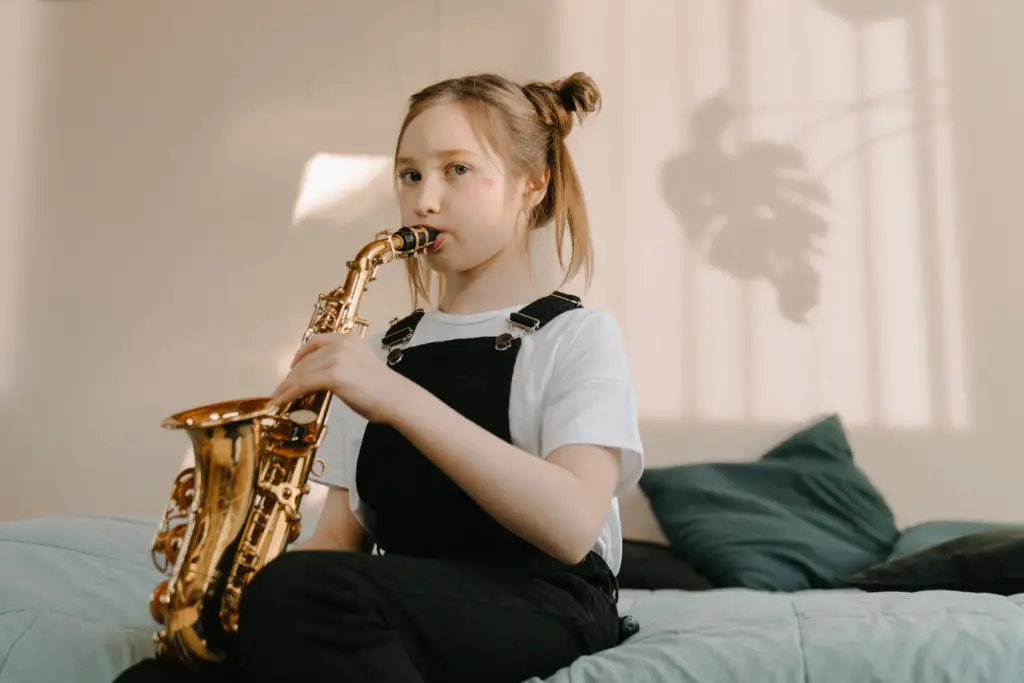Aspiring saxophonists often wonder about the cost of their first instrument. The price range for beginner saxophones can vary significantly, influenced by factors like brand, materials, and construction quality.
A good quality beginner saxophone typically costs between $500 and $1,500. This price range offers a balance between affordability and decent instrument quality for new players. Some budget-friendly options start around $200-$500, but these may lack durability or sound quality needed for long-term learning.
For those willing to invest more, high-quality student saxophones can cost up to $3,000-$5,000. These instruments often feature better materials and craftsmanship, potentially offering a smoother playing experience. Ultimately, the right saxophone depends on the player’s budget, commitment level, and specific needs.
Factors Influencing Beginner Saxophone Costs
The price of a beginner saxophone is influenced by several key elements. These factors can significantly impact the instrument’s cost and quality.
Types of Saxophones
Different saxophone types come with varying price tags. Alto saxophones are typically the most affordable, making them popular choices for beginners. They usually range from $250 to $1200 for student models.
Tenor saxophones are generally more expensive, with prices starting around $700 for beginner models. Soprano and baritone saxophones are less common for beginners due to their higher costs and playing difficulty.
The size and complexity of the instrument affect its price. Larger saxophones require more materials and craftsmanship, leading to higher costs.
Material and Build Quality
The materials used in saxophone construction play a crucial role in determining the price. Most beginner saxophones are made from brass, but the quality of the brass can vary.
Higher-quality brass alloys often result in better sound and durability, but also increase the cost. Some key differences include:
- Yellow brass: More affordable, common in student models
- Gold brass: Slightly more expensive, offers a warmer tone
- Bronze: Pricier, provides a rich, complex sound
The quality of key mechanisms and pads also impacts the price. Better-built instruments with more precise keywork and durable pads tend to cost more but offer improved playability and longevity.
Brand and Manufacturer
The saxophone’s brand and manufacturer significantly influence its cost. Established brands often command higher prices due to their reputation for quality and consistency.
Reputable brands for beginner saxophones include Yamaha, Jupiter, and Selmer. These manufacturers typically offer instruments in the $1000-$2000 range, known for their reliability and good sound quality.
Less expensive options from lesser-known brands are available, often priced between $300-$500. However, these instruments may have lower build quality and less consistent performance.
Some manufacturers offer different lines of instruments, with entry-level models designed specifically for beginners. These saxophones balance affordability with acceptable quality, making them suitable for new players.
Price Range for Beginner Saxophones
Beginner saxophones come in various price ranges depending on the quality and features. The two main categories for novice players are student models and intermediate models.
Student Models
Student saxophones are designed for beginners and typically range from $250 to $1,200. These instruments offer a good balance of affordability and quality for new players.
At the lower end of this range, saxophones priced between $250 and $500 may have limitations in terms of durability and sound quality. However, they can be suitable for those unsure about their commitment to the instrument.
For a more reliable student saxophone, players should consider spending $1,000 to $2,000. Instruments in this price range often offer better craftsmanship, improved intonation, and more consistent performance.
Intermediate Models
Intermediate saxophones bridge the gap between student and professional models. These instruments typically cost between $1,000 and $2,500.
Intermediate saxophones offer enhanced features such as improved key work, better materials, and more refined tuning. They are suitable for advancing students or adult beginners who want a higher-quality instrument from the start.
Players can expect better sound projection, easier playability, and more durability from intermediate models. These saxophones often retain their value better than student models, making them a wise investment for committed learners.
When choosing between student and intermediate models, players should consider their long-term goals, budget, and dedication to playing the saxophone.
Additional Expenses
When purchasing a beginner saxophone, it’s important to consider the extra costs beyond the instrument itself. These additional expenses can significantly impact the total investment.
A saxophone case is essential for protection during transport. Basic cases range from $50 to $70, while higher-quality options can cost up to $300.
Mouthpieces are another crucial accessory. While cheaper saxophones often come with basic plastic mouthpieces, upgrading to a better quality one can improve sound and playability. Prices for mouthpieces vary widely.
Reeds are consumable items that need regular replacement. A box of 10 reeds typically costs between $20 and $30, depending on the brand and quality.
Other necessary accessories include:
- Neck strap
- Cleaning kit (swab, brush, etc.)
- Metronome
- Tuner
These items can add another $100 to $200 to the initial cost.
Maintenance and repairs should also be factored into the budget. Regular servicing helps keep the instrument in good condition and can prevent costly repairs down the line.
Lessons are highly recommended for beginners. Private instruction costs vary by location and teacher experience, but typically range from $30 to $100 per hour.

